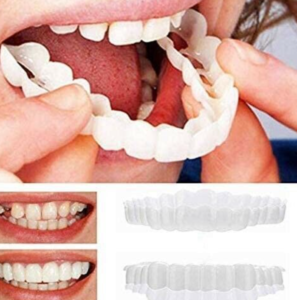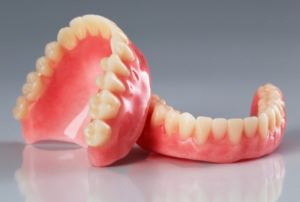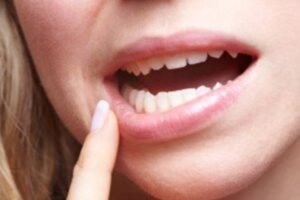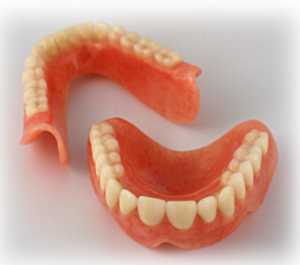The world of dentistry is vast, and the dental procedures you can have done may sometimes seem never-ending. From general cleanings to complex treatments and surgeries, it’s important to know what’s going on in your mouth so that you can make the best decisions for yourself.
Understanding common dental procedures can help you be prepared for what will be happening inside your mouth. In this article, we’ll explore the 10 most common dental procedures and give a brief overview of how they work. After reading, you will have a greater understanding of the elements involved in the necessary treatments recommended by dentists.
Dental procedures play an important role in improving oral health. However, these procedures can be intimidating for patients who visit the dental clinic for the first time. A dental clinic consists of a variety of machines and technology used to diagnose and treat dental problems, including x-ray machines, instrument tables, cleaning tools, and more. These tools and technologies allow the dentists to perform various dental procedures. Some of the most common dental procedures that are provided by Hummingbird Dental Clinic are as follows:
Common Dental Procedures
Facilitated by a hygienist or dentist, procedure plans are tailored to the individual needs of the patient and can help improve both oral health and overall well-being. A discussion with your dentist or the dental clinic’s assistants and staff may be undertaken so that you feel more at ease with the procedures being recommended.
Teeth Cleaning: Keeping your teeth in a healthy state is essential to maintaining oral health. Teeth cleaning, also known as scaling and polishing, can help prevent tooth decay, permanent staining, bad breath, and periodontal disease. Professional cleaning done at regular intervals helps ensure good oral health. Usually, patients who visit a dental clinic are recommended to have their teeth cleaned every three to six months, depending on the condition of their teeth and the protocol of the clinic.
Teeth Whitening: Teeth whitening is a cosmetic procedure that has become increasingly common in recent years. It involves the use of a bleaching agent to remove deep or surface-level stains from the enamel of the tooth, brightening the appearance of teeth and giving them an overall cleaner look. This can be done in different ways in the dental office or at home with a kit, and you can decide which way works best for you. As well, your clinician will discuss some tips on how to maintain whiter teeth once you’re done with the whitening process.
Extraction: Tooth extraction is a procedure that involves the removal of a tooth from its socket in the jawbone. It can take place due to many reasons, including infection, crowding of teeth, orthodontic treatment, etc. Trauma or injury to the mouth can also cause the need for an extraction. The procedure involves removing a tooth from the mouth. Before undergoing the procedure, the patient may choose to be made unconscious or, more routinely, may be given medication to numb the area around the extraction location.
Veneers: This is a solution that can provide a more even appearance of the teeth while also lasting long-term. Veneers are thin shells made from porcelain, ceramic, or composite bonding material that are permanently attached to a tooth’s surface. They cover the front part of your tooth, hiding cracks, stains, and other damage, thus improving its overall aesthetics. They look like your real teeth when put in place and will fill gaps between teeth.
Fillings: Dental fillings are commonly used to restore teeth that have been damaged due to decay, trauma, or wear and tear. Tooth fillings are an effective way to restore the tooth’s shape, function, and overall integrity. These restorations can protect teeth from further damage or deterioration, reduce or eliminate sensitivity caused by tooth decay, and help maintain an attractive smile. In this article, we’ll discuss what tooth fillings are, when they are done, how they are applied, and what materials are used in the process.
Crowns: Teeth can become decayed or damaged due to age, poor oral hygiene habits, genetics, or lifestyle choices. Tooth crowns are a type of restoration used in dentistry as a way of restoring damaged teeth to their original appearance and performance levels. A tooth crown can protect your teeth from further damage and improve your overall comfort. A crown (also known as a cap) is a type of cover that is placed over a damaged tooth. Various materials, such as porcelain, acrylic resin, and gold, can be used to make crowns.
Root Canals: A root canal procedure may be required if the tissue inside a tooth, known as the pulp, becomes infected or inflamed. During the procedure, the infected tissue is removed, and the inside of the tooth is cleaned and sealed. Root canals may form an important part of your treatment plan. The procedure is relatively common and harmless, and dentists use it to treat patients with the goal of saving their teeth from extraction. In essence, having a root canal performed can help prevent more serious dental issues and help you retain your natural teeth.
Bridges: Missing teeth can be embarrassing and uncomfortable to live with, leading some people to feel insecure or even anxious in social situations. Modern dentistry has made it possible to treat missing teeth with treatments such as dental bridges. A dental bridge is a dental appliance used as an effective treatment for replacing one or more missing teeth. It involves using two units called abutment teeth that are connected by an artificial tooth in between them known as a pontic. The abutment teeth are fitted on either side of the space created by the missing tooth and serve as anchors for the pontic.
Implants: Dental implants are considered to be a lasting treatment for missing or damaged teeth. The procedure falls under the category of oral surgery and requires the insertion of a metal post into the jawbone to fuse with the existing bone structure to form a secure base for a new artificial tooth. Then, a crown will typically be applied to create a natural appearance. Unlike other replacement techniques, such as bridges or dentures, they can last a lifetime with proper care.
Orthodontic Treatment: Do you have a crooked smile, overcrowded teeth, or an uneven bite? If this is the case, you may be a candidate for orthodontic treatment. Orthodontic treatment is the process of straightening your teeth in order to improve their appearance, alignment, and function. It typically involves the use of braces or other appliances to correct misaligned teeth or jaws. The aim of this specialist type of treatment is to ensure a better smile and more aesthetically pleasing facial features. It can also improve dental health and ultimately eliminate any discomfort or speech impediments associated with malocclusions.
Hummingbird Dental Clinic
As part of a regular visitation schedule, it may be determined that certain procedures will be necessary to ensure continued oral health. An advanced treatment plan that addresses your specific needs will be proposed, and your dentist will discuss the required procedures with you so that you will understand why your case is suitable for each type of treatment.
You can pre-book and plan the special care procedures according to your time and budget. Our dentists and staff are dedicated to helping you achieve excellent oral health and a beautiful smile.











